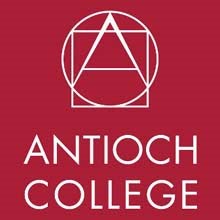Raw milk from Young's own Jerseys is heated to 90 degs. until it curdles, then the whey is drained off and the curds are compacted and aged until they are cheese. That's the short version. The long version includes, adding cultures for flavor and rennet to start the coagulation, getting the mix to the proper PH for the various kinds of cheese and different wrinkles in the process that differentiates between a simple Colby and a sharp cheddar.
When the milk curdles the curds rise to the top in a solid mass. Blades on the special cheese making equipment are used to cut them up into small pieces and, thereafter, they settle to the bottom of the whey. It takes about 1200 pounds of raw Jersey milk to make 150 pounds of cheese. According to Dan, milk from Jersey cows gives a better percentage yield as Jersey's have more milk solids in their milk.

Dan's cousin Stuart Young is one of the two cheese makers. The other is Mike Randall, who is also the chief ice cream maker. In this photo, Stuart is measuring the PH of the curds and whey, before the whey is drained off. On this day, Stuart is making cheddar, so the PH has to be just right. There is very little waste in the process as the whey is saved and used for fertilizer on the farm.
 Here the curds are being separated and compressed as the whey is drained off.
Here the curds are being separated and compressed as the whey is drained off. The compressed curds are cut into blocks. At this point, for most cheeses, the curds would be further compressed and aged. But in the cheddar making process, these blocks will be cut into strings, salted and mixed and then further compressed.
The compressed curds are cut into blocks. At this point, for most cheeses, the curds would be further compressed and aged. But in the cheddar making process, these blocks will be cut into strings, salted and mixed and then further compressed.In this video, Stuart is using the cheddar mill to cut blocks of compressed curd into strings.

The strings are salted and mixed three times before being scooped out and put into hoops, the cheese makers' word for molds. According to Dan, "mold" is a dirty word in the industry and he told me that if I insisted using it for this article, that I spell it "mould."
 Dan Young shows off the finished product in the cheese case at Young's where they have been making cheese for about a year.
Dan Young shows off the finished product in the cheese case at Young's where they have been making cheese for about a year.In addition to cheddar, Young's makes Colby, Jersey Jack (Young's own version of Colby Jack), pepper jack, and fresh cheese curds, which, according to Dan, are popular in Wisconsin, but are just catching on in Ohio. Cheddar takes the longest to make at 60 days for mild cheddar and eight-nine months for sharp.
When they decided to start making cheese, Young's sent Stuart Young and Mike Randall to the University of Vermont's Artisan Cheese Institute. They followed that up with a specially tailored course at the Food Technology Department of Ohio State. The Youngs also visited cheese producing farms all over the Midwest. The equipment pictured above was purchased from a manufacturer in the Netherlands. Dan even made a trip to the Netherlands to tour a farm that has been making cheese for over 400 years.
New to the menu at Young's is fried cheese curds. After 140 years of operation, Young's Jersey Dairy is still coming up with new ways to please their customers.
Note: I have made a correction to paragraph three to read "1200 pounds of raw Jersey milk to make 150 pounds of cheese." I had originally written 120 pounds of raw milk.












1 comment:
Great story and the cheese is good too. Young's is an important part of our local economy and we're always glad to see them start something new. I know this will be another successful venture. Who knows, will we soon be the cheese capitol of OH?
Post a Comment